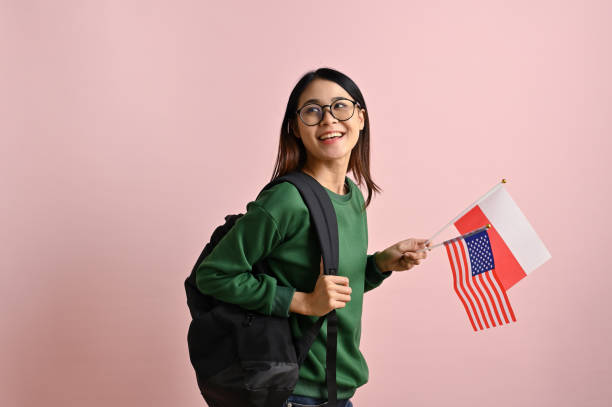14 Oct, 2024

The United States is one of the most sought-after destination for travelers, students, and professionals worldwide. To visit, work, or study in the U.S., most foreign nationals need to obtain a visa. The U.S. visa system can seem complex, with different visa types depending on the purpose of the visit. In this blog, we’ll break down the most common types of U.S. visas to help you navigate the process.
B-1 Visa: Business Visitors The B-1 visa is for individuals visiting the U.S. for business purposes. This includes attending conferences, meetings, negotiations, or consulting with business associates. The B-1 visa is a non-immigrant visa, and applicants must demonstrate that their stay is temporary and that they have a residence outside the U.S. to return to.
B-2 Visa: Tourist Visitors The B-2 visa is for tourists visiting the U.S. for leisure, vacations, medical treatment, or participation in social events. Like the B-1 visa, it is a non-immigrant visa, and applicants need to show that their visit is temporary.
Key Requirements for B-1/B-2 Visas:
F-1 Visa: Academic Students The F-1 visa is the most common visa for students pursuing academic studies in the U.S. Those enrolled in full-time programs at accredited U.S. institutions, including universities, high schools, and language training programs, receive permission. F-1 visa holders are also allowed to work on campus under certain conditions.
M-1 Visa: The M-1 visa is for students enrolling in non-academic or vocational training programs, such as technical courses. While similar to the F-1 visa, M-1 visa holders have stricter work restrictions and cannot work during their study period.
J-1 Visa: Exchange visitors who participate in work-and-study-based programs use the J-1 visa. Interns, trainees, teachers, and au pairs often use it. The J-1 program aims for cultural exchange, so participants are expected to return to their home countries after completing their program.
Key Requirements for Student Visas:
H-1B Visa: Specialty Occupations The H-1B visa is one of the most sought-after work visas. It is for individuals with specialized skills and qualifications, particularly in fields such as IT, engineering, medicine, and research. Employers must sponsor H-1B applicants, and they typically grant the visa for an initial period of three years, with possible extensions.
L-1 Visa: Intracompany Transfers The L-1 visa is for employees transferring to a U.S. office from a foreign branch of the same company. L-1A visas are for executives and managers, while L-1B visas are for employees with specialized knowledge. The L-1 visa allows companies to bring their international talent to the U.S. with relative ease.
O-1 Visa: Extraordinary Ability The O-1 visa is for individuals with extraordinary abilities in their field, including the arts, sciences, education, business, or athletics. Applicants must provide evidence of their achievements and industry leadership to qualify for this visa, which entertainers, athletes, and researchers often use.
Other Work Visas:
Key Requirements for Work Visas:
An immigrant visa, often referred to as a Green Card, allows foreign nationals to live and work in the U.S. permanently. There are several pathways to obtaining a Green Card:
Family-Sponsored Green Cards
U.S. citizens and lawful permanent residents can sponsor family members to immigrate to the U.S. Immediate relatives, such as spouses, parents, and unmarried children under 21, are given priority.
Employment-Based Green Cards
There are several categories of employment-based Green Cards, including those for individuals with extraordinary abilities, multinational executives, and professionals with advanced degrees. Employers must typically sponsor applicants.
Diversity Visa (DV) Lottery
The U.S. government offers 55,000 diversity visas annually through a lottery system. Applicants from countries with low immigration rates to the U.S. are eligible to apply.
Key Requirements for Immigrant Visas:
To find the right U.S. visa for your needs, learn about the types available, their requirements, and eligibility criteria. Prioritize researching the visa that aligns with your intentions and gather all necessary documents beforehand.
If you’re unsure which visa is right for you, consider seeking advice from immigration professionals or legal experts. A successful visa application can open the door to exciting opportunities in the U.S.!